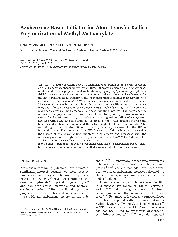摘要
2-Bromopropionic acid 2-(4-phenylazophenyl)ethyl ester, 2-bromopropionic acid 6-(4-phenylazophenoxy)hexyl ester (BPA(6)), 2-bromopropionic acid-(4-phenylazoanilide), and 2-bromopropionic acid 4-[4-(2-bromopropionyloxy)phenylazo]phenyl ester (BPPE) were used as initiators with monofunctional or difunctional azobenzene for the heterogeneous atom transfer radical polymerization of methyl methacrylate with a copper(l) chloride/N,N,N',N&DPRIME;,N&DPRIME;-pentamethyldiethylenetriamine catalytic system. The rates of polymerizations exhibited first-order kinetics with respect to the monomer, and a linear increase in the number-average molecular weight with increasing monomer conversion was observed for these initiation systems. The polydispersity indices of the polymer were relatively low (1.15-1.44) up to high conversions in all cases. The fastest rate of polymerization and the highest initiation efficiency were achieved with BPA(6), and this could be explained by the longer distance between the halogen and azobenzene groups and the better solubility of the BPA(6) initiator. The redshifting of the UV absorptions of the polymers only occurred for the BPPE-initiated system. The intensity of the UV absorptions of the polymers were weaker than those of the corresponding initiators in chloroform and decreased with the increasing molecular weights of the polymers in all cases. © 2005 Wiley Periodicals, Inc.
